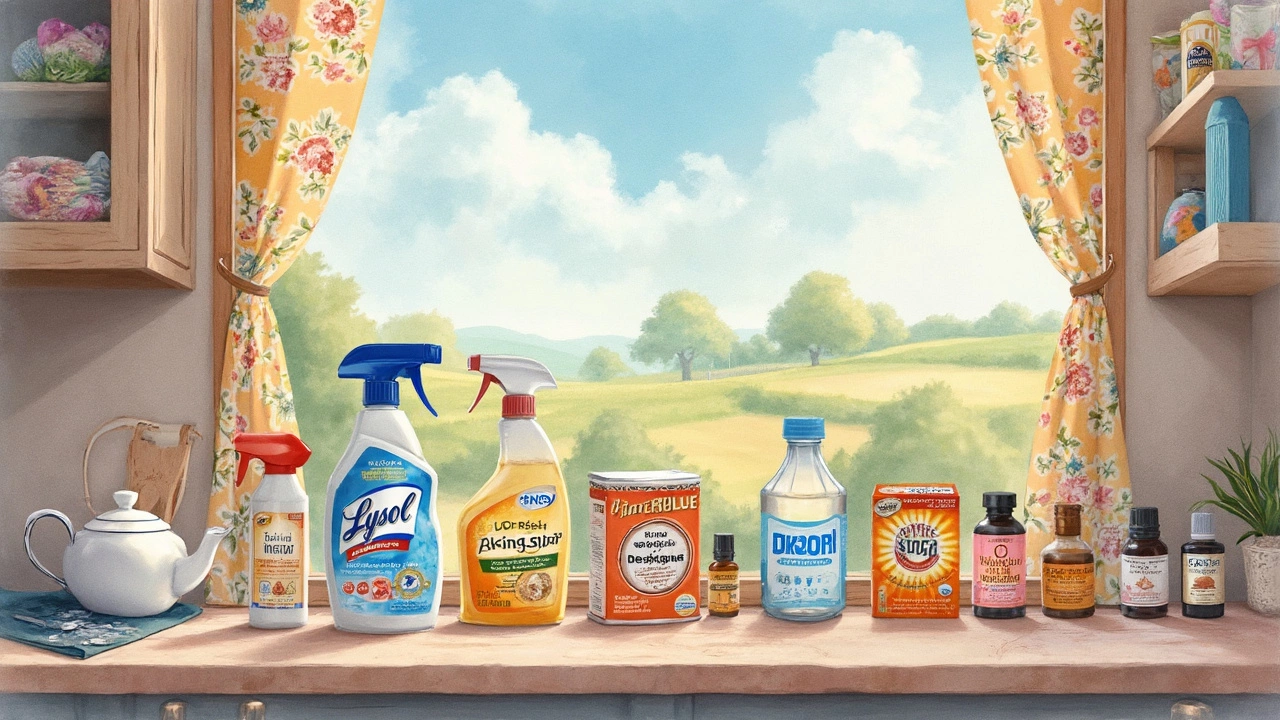Lysol Cleaning Guide: Effective, Safe Use for a Germ‑Free Home
If you’re looking for a quick way to kill germs on everyday surfaces, Lysol is probably the first name that pops into your head. It’s cheap, it smells fresh, and it claims to kill up to 99.9% of bacteria and viruses. But using it the wrong way can waste the spray or even leave residues you don’t want. Below are the basics you need to know so you get the most out of every can.
What Lysol Really Does
Lysol’s active ingredients, usually quaternary ammonium compounds, break down the outer shell of microbes. That means they work well on hard, non‑porous surfaces like countertops, doorknobs, light switches, and even bathroom tiles. They’re less effective on soft fabrics, deep carpet fibers, or heavily soiled grime. For those tougher jobs, you’ll need a pre‑clean or a different product.
One common myth is that Lysol can replace regular cleaning. It can’t. The spray needs a clean surface to work; otherwise, the grime blocks the disinfectant. Always wipe away visible dirt first, then spray and let it sit for the recommended contact time (usually 10 seconds).
Smart Ways to Use Lysol Around the House
1. High‑touch points. Keep a bottle on your kitchen counter and spritz the fridge handle, faucet knobs, and remote controls each evening. A quick wipe with a clean cloth after the spray gives you a germ‑free zone before bedtime.
2. Bathroom boost. After you scrub the shower and sink, give the mirror, vanity, and toilet seat a light mist. The fresh scent also helps mask bathroom odors.
3. Gym gear. If you store workout mats, dumbbells, or yoga blocks, a quick spray and wipe after each use stops sweat‑based bacteria from spreading.
4. Travel kit. Small travel‑size Lysol cans are handy for hotel rooms. A quick spray on the TV remote, door knob, and nightstand keeps you safe when you’re away from home.
5. Pet areas. Use Lysol on hard floors near pet bowls or litter boxes, but avoid spraying directly on pet bedding. The strong scent can be off‑putting for animals.
When spraying, hold the can about 6‑8 inches away and apply a thin, even coat. Don’t oversaturate – a light mist is enough. After spraying, let the surface stay wet for the full 10 seconds before wiping. Skipping this step reduces the product’s ability to kill germs.
Safety tip: Keep Lysol out of children’s reach and never mix it with bleach or ammonia. The chemical reaction can create dangerous fumes. Also, if you have sensitive skin or asthma, wear gloves and work in a well‑ventilated area.
By following these simple steps, you’ll get the most bang for your buck and keep your home feeling fresh without over‑doing it. Lysol is a solid tool in a regular cleaning routine, not a magic wand. Pair it with a good mop, a vacuum, and a wipe‑down schedule, and you’ll notice fewer sick days and a more pleasant living space.

Is Lysol Eco-Friendly? A Clear Look at Your Cleaning Choices
Is Lysol the green cleaner you think it is? Dive into the details as we explore the eco-friendliness of Lysol products. From examining its ingredients to its impact on the environment, find out how Lysol stacks up against other cleaning options. Get tips on making more sustainable choices for a cleaner home and planet.
Read More